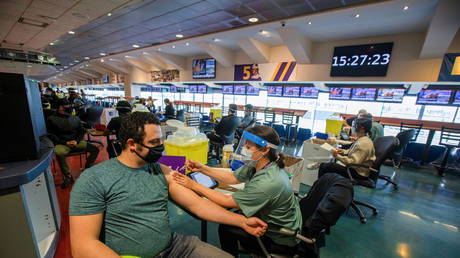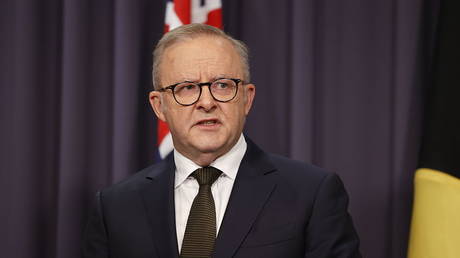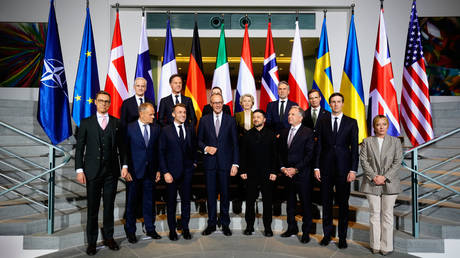
In an indictment of Canada’s Covid vaccine distribution strategy, the premiers of two of the country’s provinces have turned to neighboring US states to ensure shots for essential workers like cross-border truckers and teachers.
Ontario Premier Doug Ford explored the possibility of stateside vaccinations with Michigan Governor Gretchen Whitmer on Wednesday. Whitmer was reportedly open to discussing the idea further. That development came after Manitoba Premier Brian Pallister said he struck a similar deal last month with North Dakota Governor Doug Burgum.
Ontario Premier Doug Ford explored the possibility of stateside vaccinations with Michigan Governor Gretchen Whitmer on Wednesday. Whitmer was reportedly open to discussing the idea further. That development came after Manitoba Premier Brian Pallister said he struck a similar deal last month with North Dakota Governor Doug Burgum.
There is no guarantee Ford’s as yet unoutlined proposal will go forward – considering Michigan is currently the worst-hit US state. The CBC reported that a “timeline on next steps was not immediately clear.” In the North Dakota-Manitoba agreement, the first of its kind between the two countries, between 2,000 and 4,000 truck drivers will be vaccinated free of cost. The scheme was later expanded to school teachers.
The cross-border overture came at a time when Canadian health authorities are debating whether to compensate for shortages of the AstraZeneca and Moderna vaccines by allowing people to receive two different types of Covid shots.
The National Advisory Committee on Immunization (NACI) is monitoring a UK-based study looking at the effectiveness of the mixed-vaccine dose approach, but the results are not expected until next month. According to the latest available government figures, Canada has fully inoculated just 2.55% of its roughly 38 million population.
This mixed-dose approach would likely involve “an mRNA vaccine like a Pfizer or a Moderna, combined with an AstraZeneca which is a viral vector vaccine,” said Supriya Sharma, chief medical adviser at Health Canada, at a news conference on Wednesday.
If the vaccine mixing protocol is adopted, it would mark one more in a series of major deviations from prescribed vaccine guidelines. Canada had earlier opted to increase the interval between mRNA vaccine doses from the recommended three to four weeks to four months in order to make supplies last – with the exemption of high-risk cases.
Ontario, which is grappling with a deadly third wave of infections that has strained its healthcare systems, expects to receive weekly shipments of more than 785,000 doses from Pfizer-BioNTech this month, and more than 938,000 doses per week in June. In addition, a 388,000 dose-strong Moderna vaccine shipment is expected during the week of May 10. Supply of the AstraZeneca is less certain.
“With the much larger quantities of the Pfizer vaccines that we’re receiving throughout the month of May, we may well be able to shorten the timeline for people to receive their second doses,” Ontario Health Minister Christine Elliott said earlier this week.
Conflicting information about vaccine safety and prioritization protocols have contributed to a sense of vaccine hesitancy as has the confusion plaguing the national vaccine rollout in recent weeks.
The NACI added to a debate over preferred vaccines after suggesting lower-risk Canadians might be better served waiting for an mRNA vaccine than opting for the Johnson & Johnson and AstraZeneca viral vector-based shots, which have been linked to a rare incidence of blood clots.
“If, for instance, my sister was to get the AstraZeneca vaccine and die of a thrombosis when I know that it could have been prevented and she’s not in a high-risk area, I’m not sure I could live with it,” NACI chair Caroline Quach-Thanh said in a television interview.
The controversy elicited pushback from Prime Minister Justin Trudeau, who urged Canadians to take the first shot offered.
Think your friends would be interested? Share this story!




